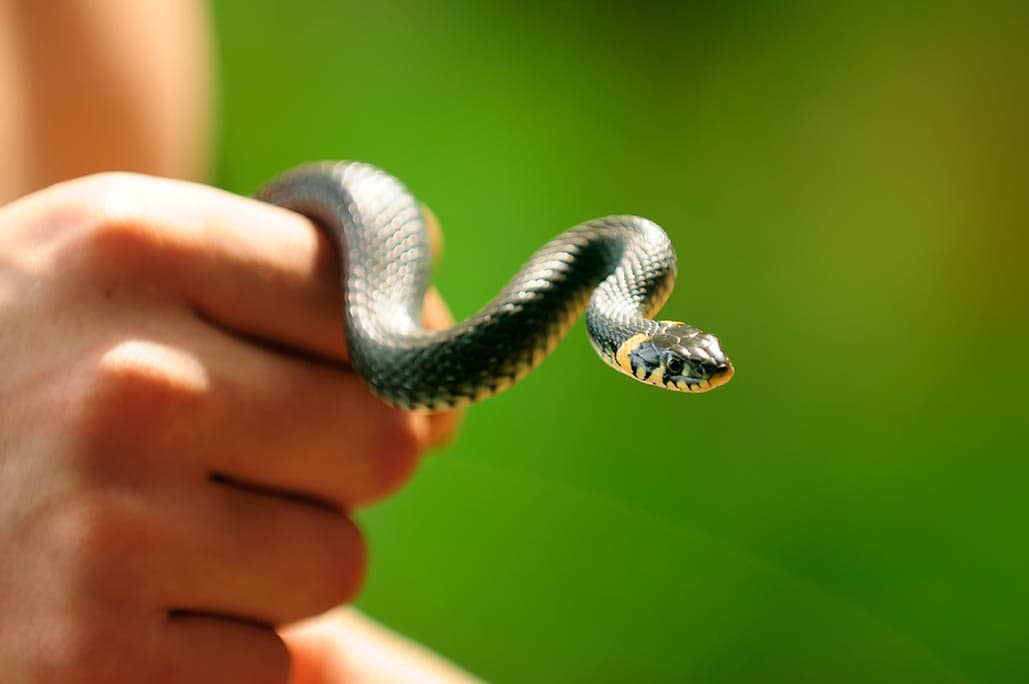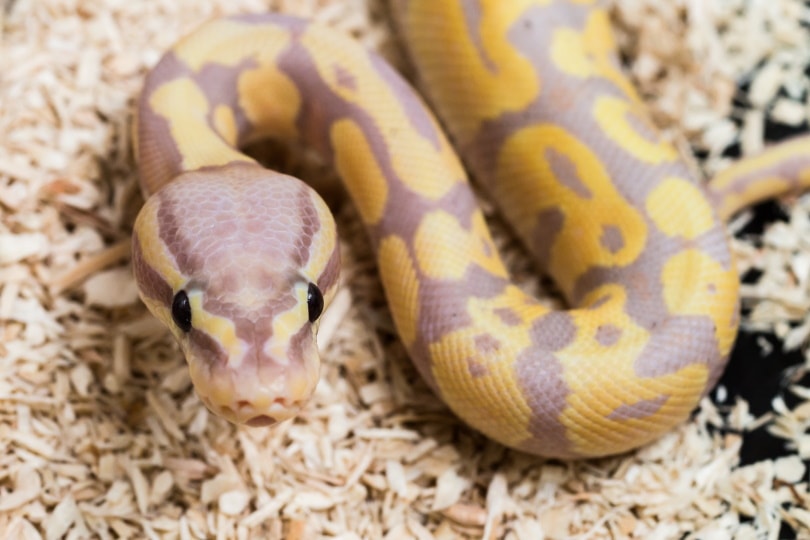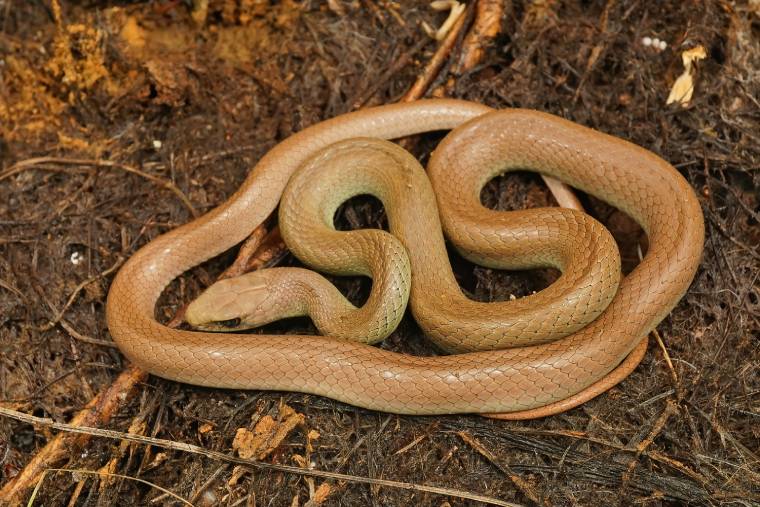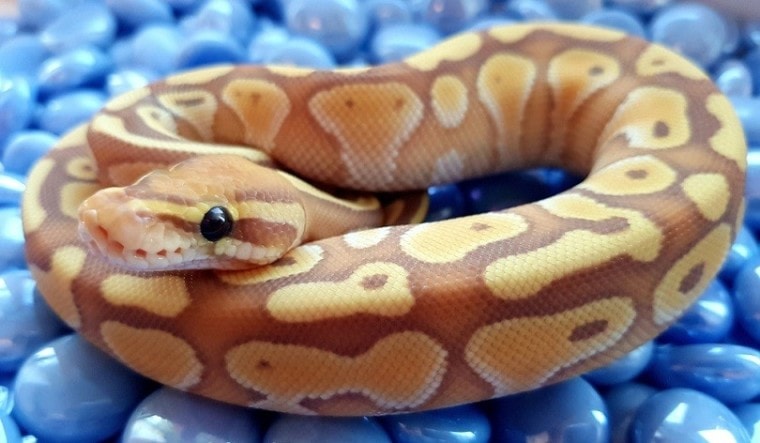
A morph is a type of snake within a species that has a distinct appearance that sets it apart from common snakes within the species. The coral glow ball python morph, therefore, is a type of ball python that is characterized by its unique coloration. Are you thinking about getting a ball python, but unsure whether one of these snakes is right for you and your family? In this article, we will discuss everything you need to know about the coral glow ball python to help you decide if one of these snakes is a good fit for you.
Quick Facts about Coral Glow Ball Python Morphs
| Species Name: | Python regius |
| Common Name: | Ball python |
| Care Level: | Low |
| Lifespan: | Up to 30 years |
| Adult Size: | 2-5 feet long |
| Diet: | Crickets, mice, and rats |
| Minimum Tank Size: | 30-60 gallons (adults) |
| Temperature & Humidity | 78°F (cool end), 95°F (warm end), 40%-60% humidity |
Do Coral Glow Ball Python Morphs Make Good Pets?
As far as snakes go, the coral glow ball python morph is an excellent pet, even for beginners. Why? One reason is its size relative to other constricting snakes. Growing to be between 2-5 feet long, these snakes are fairly small as snakes go, which means they are easier to handle and require less space than other species. These snakes are also considered to be more docile than other species, making them ideal for beginner and experienced snake owners alike.

Appearance
The coral glow ball python is characterized by bright orange and yellow skin with an underlying purplish hue. The coral glow python is a type of “banana” ball python, so called because these snakes will start to develop dark spots as they start to get older—much like a banana!
How to Take Care of Coral Glow Ball Python Morphs
Habitat, Tank Conditions & Setup
Tank
The coral glow ball python is smaller than other species, but you still need to make sure to provide your snake with an adequately sized tank. Aim for a glass vivarium that is at least 40 gallons large. You can spot clean the tank as needed, but you should plan to fully clean it about once per month.
Lighting
Unlike other reptiles, snakes do not require UVB lighting, but you may choose to include it in the tank. However, you will need to include two heat lights that you can keep on a 12-hour cycle—one for the day and one for the night.

Heating (Temperature & Humidity)
Your snake’s tank should have two separate areas: a basking area at about 95° F, and a cool area at 78° F. You should try to keep the tank at around 40%-60% percent humidity. You can achieve the necessary temperature by purchasing an incandescent lightbulb for the tank.
Substrate
There are many different types of substrate you can use. Choose a substrate that is porous enough to maintain the tank’s humidity. Aspen shavings are a popular choice.
Tank Recommendations
| Tank Type: | Minimum 30-40 gallon glass vivarium |
| Lighting: | Heat lighting; UVB lighting unnecessary |
| Heating: | Heating pad under tank, incandescent heat bulbs |
| Best Substrate: | Aspen shavings |
Feeding Your Coral Glow Ball Python Morph
Like other snake species, the type of prey a coral glow ball python needs depends on how large the snake is. In most cases, hatchling and juvenile ball pythons should not eat the same type of prey as adult snakes. In general, the prey should be no bigger than the widest part of your snake. Small or young snakes should eat a diet of crickets and pinkie mice, whereas adult snakes can usually eat adult mice and rats.
In terms of how often you should feed your snake, it’s important to know that a snake does not need to eat daily. In the wild, snakes eat as they find prey, which can sometimes mean that they will not eat for long stretches at a time. Generally speaking, you should plan to feed a juvenile snake about once a week, or once every 5 to 6 days. Adults only need to eat about once every 10 days to once every 2 weeks.

Diet Summary
| Fruits | 0% of diet |
| Insects | 0% of diet |
| Meat | 100% of diet- small/medium-sized rodents |
| Supplements Required | N/A |
Keeping Your Coral Glow Ball Python Morph Healthy
If you aren’t familiar with reptiles, it can be hard to tell whether or not a snake is healthy. Generally speaking, there are some signs you can look for. A healthy snake should have clear eyes (unless it’s shedding), healthy-looking skin that sheds regularly and in one piece, and it should eat regularly. Shedding too much or too little, bumps on your snake’s skin, a cheese-like discharge coming from the mouth, and reluctance to eat are a few signs that something might be wrong. Below, we have listed some common health problems that your coral glow ball python may be prone to.
Common Health Issues
Lifespan
With the proper care, these snakes can be long-term pets. Since most snakes live to be between 20 and 30 years in captivity, the coral glow ball python’s lifespan of about 30 years is at the upper end of that spectrum. It is important to keep this snake’s lifespan in mind before purchasing one; unlike other types of pets such as fish or rodents, buying one of these pets is a long-term commitment.
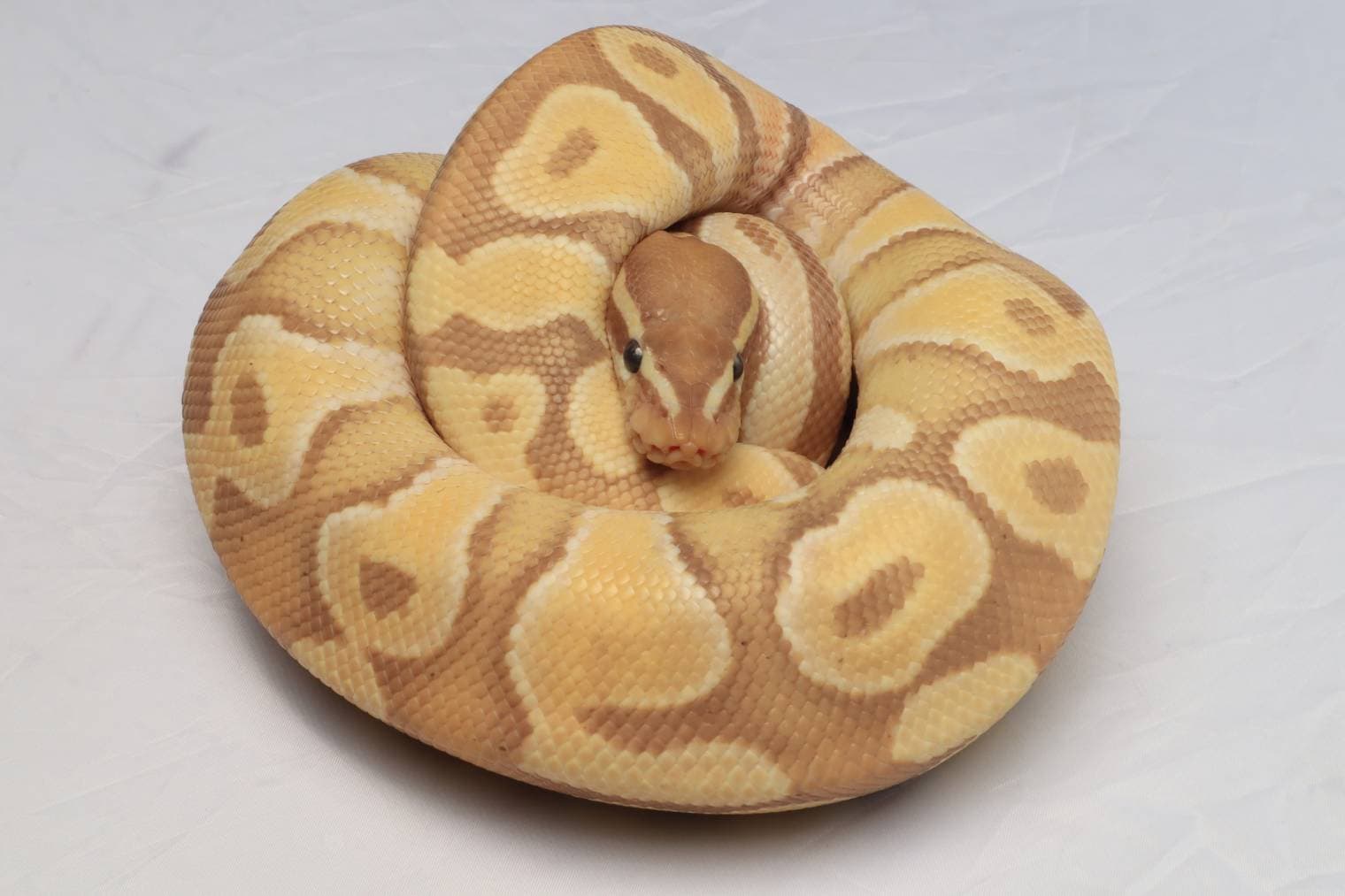
Breeding
If you want to breed your coral glow ball python, there are a few things you should keep in mind. For one thing, the “coral glow” gene is a codominant trait, which means you only need one coral glow python to produce more coral glow pythons. Keep in mind that not all of the offspring will be morphs, however; half of the offspring will be normal pythons. Typically, ball pythons breed once per year, producing around six eggs per clutch, on average. Wild ball pythons tend to breed between September and November, correlating with the rainy season.
 Are Coral Glow Ball Python Morphs Friendly? Our Handling Advice
Are Coral Glow Ball Python Morphs Friendly? Our Handling Advice
It may take some time for your snake to get used to being handled by you. When you first get your snake, avoid handling it for the first few weeks to give it a chance to get adjusted to its new environment. Never handle your snake if it hasn’t eaten in a while; doing so may increase the chances that it will try to bite you. Make sure to wash your hands directly before handling your snake to rid your hands of any scents that could be construed as food and further reduce the chance of being bitten.
When you go to handle your snake, use both hands to support both your snake’s head and body. You can use a loose grip so that your snake can move freely around your body. Make sure to avoid any sudden movements, which can scare your pet.
Shedding: What to Expect
You can expect your coral glow ball python to shed its skin regularly, typically every 4-6 weeks. Right before it sheds, you will likely notice its scales starting to become loose and its eyes having an opaque quality. You can help your snake shed its skin more efficiently by providing a water bowl for it to soak in in addition to moist moss, which you can place in your snake’s shelter or hide box. Do not try to handle your snake while it is shedding and do not try to physically remove the skin yourself.
How Much Do Coral Glow Ball Python Morphs Cost?
The average ball python costs around $50, but for unusual morphs such as the coral glow ball python, you should expect to pay more. You will likely end up paying somewhere between $150-$300 for one of these snakes. When looking for a coral glow ball python, make sure your snake is healthy before you buy it. A healthy snake should be curious and alert with a round body and clean, clear eyes. To learn more about your snake’s health, you could ask the breeder for a feeding demonstration. This will help you assess whether or not the snake will eat readily.
Care Guide Summary
Final Thoughts
The coral glow ball python is considered to be a low-maintenance, docile snake that is great for beginners and experienced snake owners alike. The beautiful coral colors on this snake make it a unique pet at a price point that is not much higher than a standard ball snake. If you’re new to reptiles or just looking for something a little different, this snake is a great choice!
Related read:
Featured Image Credit: Deb Davis, Shutterstock




